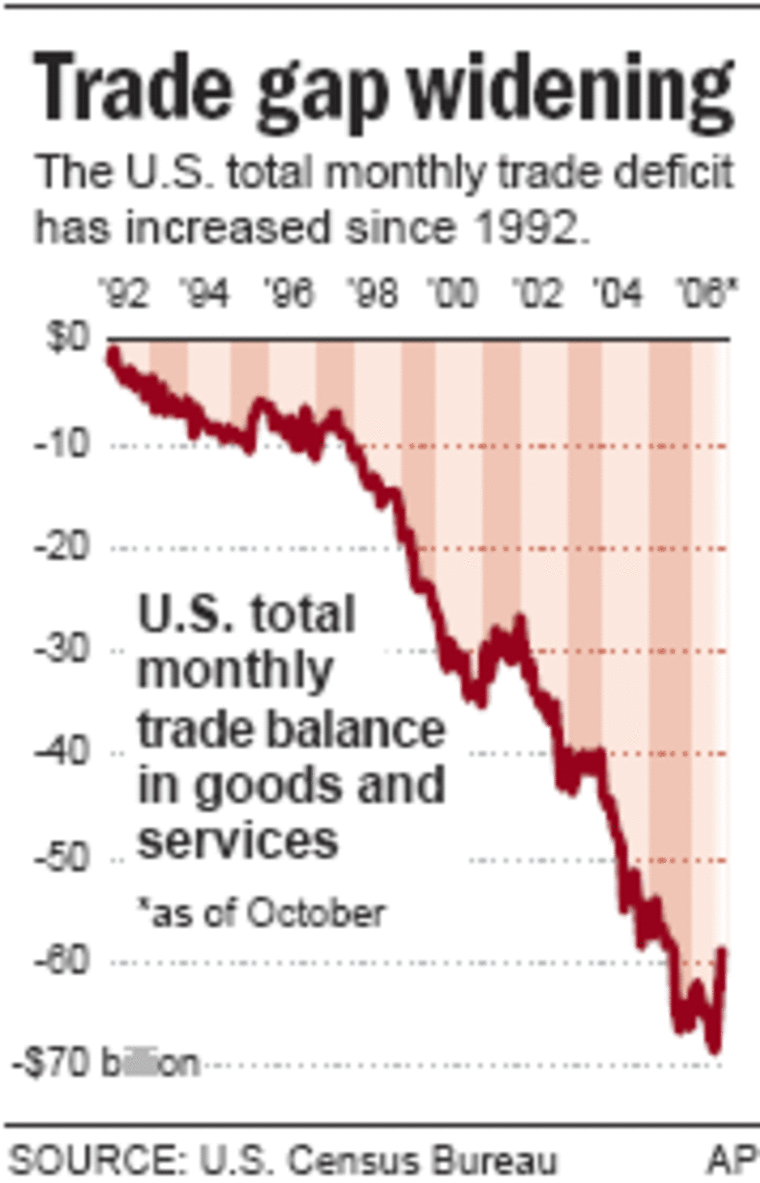Pushed up by soaring oil prices, America’s trade deficit surged to a record high in the summer, but analysts predicted a slowly improving imbalance in the months ahead.
The current account trade deficit increased 3.9 percent to an all-time high of $225.6 billion in the July-September quarter, the Commerce Department reported Monday.
That third-quarter deficit was equal to 6.8 percent of the total economy, up from 6.6 percent of gross domestic product in the second quarter.
The current account is the broadest measure of trade because it tracks not only the flow of goods and services across borders but also investment flows. It represents the amount of money that must be borrowed from foreigners to make up the difference between imports and exports.
At current levels, the United States is borrowing more than $2 billion a day from foreigners to finance the trade deficit.
While foreigners have been happy to sell their cars, clothing and computers to Americans and hold dollars in return, the worry is that at some point the desire for dollar-denominated assets could weaken, triggering sharp declines in the value of the dollar and pushing interest rates higher.
Analysts noted that for the third straight quarter, foreigners earned more on their U.S. investments than Americans did on their foreign holdings, sending the deficit in investment flows to a record of $3.8 billion.
The current account deficit is expected to hit a new record for the full year, far surpassing last year’s record of $791.5 billion although some analysts said they believed the third-quarter figure would represent the worst of the deficit numbers.
“Lower oil prices, robust export growth and some cooling in import growth should bring the deficit down, beginning in the fourth quarter,” said Nigel Gault, an economist with Global Insight, a private forecasting firm.

He predicted the deficit would average around $866 billion this year but shrink moderately to $816 billion next year.
But imbalances at this level will still leave U.S. financial markets vulnerable to foreign investment patterns, economists said.
“The expected modest improvement in the current account deficit is not that encouraging since the overall shortfall will remain very large, keeping external financing risks elevated,” said Michael Gregory, an economist at BMO Capital Markets Economics.
Democrats, who took over control of the House and Senate in the November elections, attacked President Bush’s trade policies, charging that the administration has failed to protect U.S. workers from unfair competition from China and other countries.
Treasury Secretary Henry Paulson led a high-level delegation that included seven members of Bush’s Cabinet and Federal Reserve Chairman Ben Bernanke to Beijing last week for two days of talks aimed at resolving long-standing trade problems.
However, the two sides reported no breakthroughs on the biggest issues such as American manufacturers’ complaints that China is manipulating the value of its currency to gain trade advantages.
The $225.6 billion deficit for the third quarter was in line with economists’ expectations. It followed a $217.1 billion shortfall in the April-June quarter and topped the previous record of $223.1 billion in the final three months of last year.
The increase in the shortfall last quarter was led by an $8.1 billion rise in the deficit in goods. More than half the increase reflected a bigger foreign oil bill.
America’s surplus in services, which includes such things as airline tickets, banking services and consultants’ fees, rose by $810 million to $18.3 billion.
The category of unilateral transfers, which includes payments to foreign governments and individuals, rose by $406 million to $21.5 billion in the third quarter.